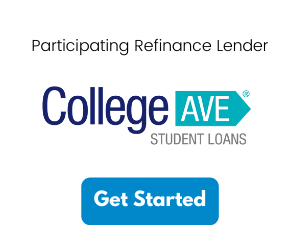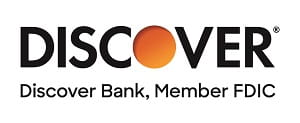
What is a HELOC?
HELOC stands for Home Equity Line of Credit. A HELOC allows you to tap into your home’s equity, which is the difference between what is owed and your home’s estimated value. When you borrow against the equity in your home, the home itself is used as collateral. That means if you default on your HELOC, you could potentially lose your home.
How to Use a HELOC to Pay Off Student Loans
Depending on your circumstances, a HELOC may give you access to a high line of credit; maybe even enough to cover all of your educational debts. And if the interest rates are low (assuming you qualify for a low rate that won’t skyrocket—some rates are fixed and some are variable), that could be to your advantage.
Should You Use Your Home’s Equity to Pay Off Your Student Loans?
In certain situations, it might be worth considering using your home equity to pay off your student loans. However, before exploring this option, there are several important factors to take into account:
1. Determine the amount of equity you currently have in your home. Keep in mind that the value of your home can fluctuate based on market conditions. If home prices are high, your home may be valued at a greater amount. Conversely, if home prices are low, your home's value may be lower.
2. Assess the state of the market and consider current interest rates. It is essential to understand whether the rates are fixed or variable. This will help you make an informed decision about borrowing money using a Home Equity Line of Credit (HELOC).
3. Conduct a thorough evaluation of your individual situation. Consider the potential risks and consequences. If there are significant market changes, such as a decrease in home prices, it's important to understand how this could impact your borrowing ability. For instance, your bank may freeze or reduce your HELOC if your home's value decreases. Additionally, if you have already withdrawn funds that exceed your home's current value, changes in the market may have an impact.
Here’s something else to consider. If the current rates being offered on a HELOC are lower than the interest rates on student loans, you may be tempted to use a HELOC instead of a student loan. Just remember that a variable interest rate may change over the life of the loan, and with those changes your payment amounts may change as well. While more and more banks are now offering fixed rate options, generally you will see variable rates being offered.
If you do decide to tap into your home equity to pay off student loans, just remember that you’re simply transferring debt from one loan holder to another. You’ll want to consider not only the interest rate, and streamlined repayment benefits, but any other terms and conditions that may apply to the HELOC.
Before you make a decision, you should also consider the perks you will be giving up for any federal student loans you may have. There are a number of borrower benefits and protections that are available to you for the life of your loan. Things like income-driven repayment plans, the ability to utilize deferments, and possible federal student loan forgiveness which would be forfeited if you pay off federal student loans with a HELOC. You also want to do your research on the HELOC loans you are considering. For example, what happens if you are unable to repay your HELOC according to the terms and conditions you agreed to—are you risking your home?
Pros of Paying Student Loans with a HELOC
Despite the drawbacks of a HELOC, there are still some pros to paying off student loans with a HELOC. Here are some of the benefits to weigh.
Lower Interest Rate
The interest rate on a HELOC may be lower than that of your federal and private student loans. Using a HELOC may help you save money in the long run on the overall cost of the loan.
Loan Consolidation
Some borrowers use a HELOC to consolidate their debt. That is, roll all of their student loans into one new loan. In this case, you would be paying off your student loans with the HELOC and turning your attention to repaying the HELOC. Of course, you also have the option to refinance your student loans to accomplish the same thing.
Lower Monthly Payments
Depending on the terms of the HELOC, you may be able to lower your monthly payments. You may have a HELOC where you are only required to pay interest for a set period of time before you pay on the principal. This could help you save money month to month if you are strapped for cash. Just be sure to stay on top of all payments due and begin paying on the loan principal as soon as possible.
A HELOC May Affect Your Credit Score
A HELOC could actually have positive impacts on your credit score. If you pay off all your student loans at once, you may see an increase in your credit score because the number of open accounts on your credit report decreases, and your credit utilization will be scored differently by FICO®. The FICO Score “excludes HELOCs from revolving credit utilization calculations,” according to Experian. This is different than credit utilization for credit cards and other credit lines. Of course, this also assumes that you keep your credit line low.
Cons of Paying Student Loans with a HELOC
As with most things, there are pros and cons. The same applies to paying your student loans with a HELOC. Here are some of the cons of taking out a HELOC that you will want to consider.
You Could Lose Your Home
With a HELOC, your home is the collateral on the loan. That means if you default on repaying the HELOC, you could potentially lose your home. Consider emergency situations that may arise, and ensure you can cover them. Putting your house on the line is worth deep consideration regardless of the potential savings.
You Will Lose the Student Loan Interest Rate Tax Deduction
When you pay off your student loans with a HELOC you will not be eligible for the student loan interest tax deduction. This deduction is tied specifically to your student loans and will not apply to HELOC funds used to pay them.
Student Loan or Home Equity: A Side-by-Side Comparison
| Feature | Student Loan | Home Equity (HELOC) |
|---|---|---|
| Secured loan? | No | Yes |
| Collateral | None, federal loans are backed by the government. |
Yes, your home! |
| Low interest rates | Yes | Possibly |
| Subsidized interest? | Yes, with some federal loans | No |
| Deferment options | Payments deferred while in school and during repayment, when needed. | Interest only payments are required during the draw period. Some lenders may require principal payments also. |
| Repayment begins | 6 months after graduation | Interest is due during the draw, which could last 5 or 10 years. Full repayment is required thereafter. In some cases, this may be a balloon payment. |
| Death/Disability Benefits? | Yes, included | Additional insurance required |
| Ability to transfer the loan? | Through a refinanced loan, parents may be able to transfer educational debt borrowed on behalf of son/daughter to that child. | Most HELOCs are non-transferrable. This is true for person-to-person and bank-to-bank transactions. Consult an attorney for further guidance. |
| Repayment benefits | No penalty for prepayment, may qualify for income driven repayment or public service loan forgiveness. | Ability to take advantage of a long draw period. Usually a long repayment term (which may help with monthly payment amounts). |
When it comes to swapping your student loan debt for a HELOC, we recommend making a list of what you want to accomplish with the HELOC (lower APR, fewer payments per month), and weighing all of your options, including student loan refinancing before you make a decision.
Refinance Your Student Loans
An alternative to using a HELOC to pay off student loans--and potentially putting your house at risk—is to apply for student loan refinancing. Student loan refinancing allows you to combine private and/or federal student loans into one new loan. You can easily compare lenders to find the best interest rate.
Benefits of Student Loan Refinance
With student loan refinancing, you may be able to accomplish the following without putting your home at risk:
- Lower your interest rate
- Lower monthly payments
- Extend your repayment term
- Consolidate many loans into one monthly payment
- Release a cosigner












